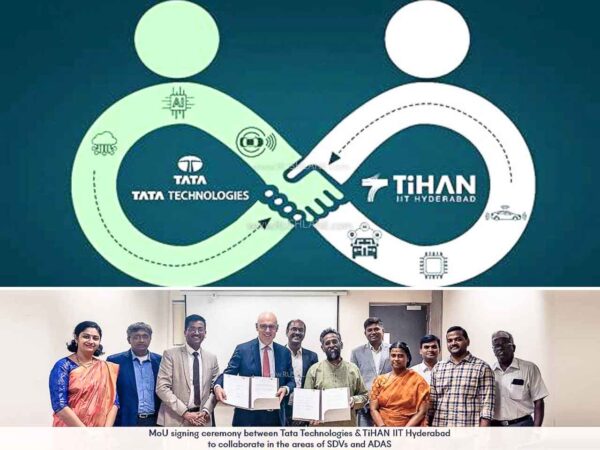
Tata Tech, TiHAN Exploring Software Defined Vehicles (SDVs) and Advanced Driver Assistance Systems (ADAS)
The automotive industry is constantly evolving, with technology playing a crucial role in shaping its future. In a significant development, Tata Tech has signed a Memorandum of Understanding (MoU) with Technology Innovation Hub on Autonomous Navigation (TiHAN) at the Indian Institute of Technology (IIT), Hyderabad. This collaboration aims to foster the development of Software Defined Vehicles (SDVs) and Advanced Driver Assistance Systems (ADAS). Key enablers of the autonomous driving revolution for software-driven vehicles.
The advent of autonomous vehicles has brought about a paradigm shift in the automotive industry. SDVs rely on a combination of software, sensors, and artificial intelligence to navigate and operate on roads without human intervention. ADAS encompasses a range of technologies designed to enhance the safety and performance of vehicles. Features include collision avoidance, lane departure warning, and adaptive cruise control.
Understanding Software Defined Vehicles (SDVs) and Advanced Driver Assistance Systems (ADAS)
SDVs are at the forefront of technological innovation in the automotive sector. These vehicles utilise a multitude of sensors, including cameras, LiDAR, radar, and ultrasonic sensors. They perceive their environment and make informed decisions in vehicle automation. Integration of powerful onboard computers and sophisticated software is essential. It enables SDVs to analyse sensor data in real-time, interpret road conditions, and navigate complex traffic scenarios.
ADAS focuses on augmenting the driver’s capabilities and improving overall vehicle safety. This technology assists drivers by providing warnings, automated braking, and steering interventions when potential hazards are detected. ADAS systems often serve as a foundation for autonomous driving capabilities. And bridge the gap between conventional vehicles and fully autonomous vehicles.
Importance of Innovative Solutions and Accelerators in SDV Development
Development of SDVs with autonomous technology presents several challenges. There is a need for innovative solutions and accelerators that can reduce the time and cost associated with tech incubation. Traditional automotive development cycles are time-consuming. But with the advancements in SDVs, there is a growing demand for expedited product development timelines for smart vehicle systems.
Innovation in software development, simulation, and testing methodologies is crucial to meet these demands. Additionally, the cost of developing and testing autonomous technology can be prohibitively high. Therefore, the collaboration between Tata Technologies and TiHAN IIT Hyderabad aims to address these challenges by leveraging their combined expertise and resources.
The Need for Innovation in Developing SDVs with Autonomous Technology
The development of SDVs with autonomous technology requires innovative solutions and accelerators to help optimize product development timelines. SDVs are the future of automotive technology, and essential in keeping pace with the rapidly advancing industry.
The collaboration between Tata Technologies and TiHAN is expected to yield several benefits, including:
Addressing the challenges in developing SDVs and the latest technologies
Optimizing product development timelines
Developing platforms and Proofs of Concept (POC) for Software Defined Vehicles (SDVs) and ADAS
Upskilling Tata Technologies’ engineers in new tech areas
Collaboration on SDVs and ADAS

